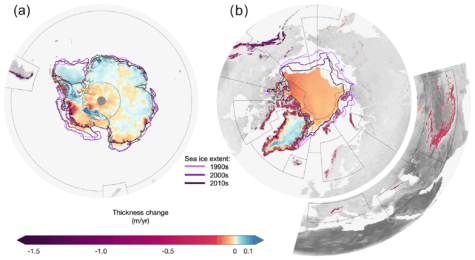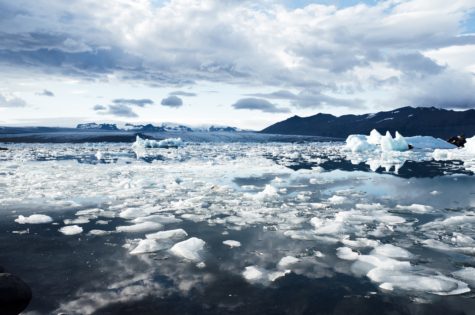LEEDS, United Kingdom — Ice may be a difficult commodity to find in coming years, according to an unsettling new study by researchers at the University of Leeds. Their findings conclude our planet continues to lose ice at faster and faster rates, with no signs of a slow down anytime soon.
Between 1994 and 2017, Earth lost 28 trillion tons of ice. For reference, that’s enough ice to cover the entire United Kingdom in a sheet of snow 328 feet thick.
After using satellite data to track global ice loss, study authors say the melting of ice on Earth has steadily increased over the past 30 years. During the 1990s, roughly 0.8 trillion tons of ice melted annually. By 2017, 1.3 trillion tons melted over the course of just one calendar year.
What happens when so much ice melts?
Sea levels rise, threatening to throw the natural balance of the planet out of whack. Coastal cities and communities are being put at greater risk of flooding and devastation, and countless wildlife species face the possibility of their entire natural habitat being destroyed.

Researchers say there has been a 65-percent increase in the rate of ice loss over the past 23 years. Most of that lost ice had been located in Antarctica and Greenland’s polar ice sheets.
“Although every region we studied lost ice, losses from the Antarctic and Greenland ice sheets have accelerated the most,” says lead study author Dr. Thomas Slater in a university release. “The ice sheets are now following the worst-case climate warming scenarios set out by the Intergovernmental Panel on Climate Change. Sea-level rise on this scale will have very serious impacts on coastal communities this century.”
“Over the past three decades there’s been a huge international effort to understand what’s happening to individual components in Earth’s ice system, revolutionized by satellites which allow us to routinely monitor the vast and inhospitable regions where ice can be found,” the research fellow at Leeds’ Centre for Polar Observation and Modeling adds. “Our study is the first to combine these efforts and look at all the ice that is being lost from the entire planet.”
What’s causing all the ice to melt?
Unsurprisingly, all of this extensive ice loss has been caused by the constant warming of the planet’s oceans and atmosphere. Since 1980, Earth’s oceans and atmosphere have warmed by over 32 degrees Fahrenheit each decade. Researchers say most of the melted ice (68%) is due to atmospheric warming, with oceanic warming accounting for the rest.
The regions with the most recorded loss of ice include the Arctic Sea (7.6 trillion tons) and Antarctic ice shelves (6.5 trillion tons). Notably, both of those float on the surface of the polar oceans.
“Sea ice loss doesn’t contribute directly to sea level rise but it does have an indirect influence. One of the key roles of Arctic sea ice is to reflect solar radiation back into space which helps keep the Arctic cool,” explains Dr. Isobel Lawrence, another research fellow at the Centre for Polar Observation and Modeling. “As the sea ice shrinks, more solar energy is being absorbed by the oceans and atmosphere, causing the Arctic to warm faster than anywhere else on the planet.”
“Not only is this speeding up sea ice melt, it’s also exacerbating the melting of glaciers and ice sheets which causes sea levels to rise,” she continues.
Human may see less snow-covered landscapes soon
The study notes not all lost ice had been in water; half of all observed ice losses occurred on land. This land-based portion of losses include 6.1 trillion tons from mountain glaciers. 2.5 trillion tons come from the Antarctic ice sheet and 3.8 trillion tons from the Greenland ice sheet. In total, land-based ice losses are estimated to have raised global sea levels by just under one foot.
Study authors theorize that for every 0.4 inch increase in sea levels, another one million people are placed in danger of seeing their homes washed away.
Despite only accounting for one percent of Earth’s ice, glaciers are playing a major role in this as well. Researchers estimate glaciers are responsible for about a quarter of Earth’s lost ice over the past decades.
“As well as contributing to global mean sea level rise, mountain glaciers are also critical as a freshwater resource for local communities,” concludes study co-author and PhD researcher Inès Otosaka. “The retreat of glaciers around the world is therefore of crucial importance at both local and global scales.”
The study is published in The Cryosphere.
